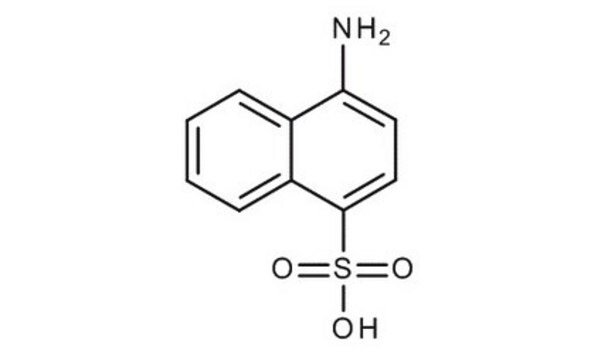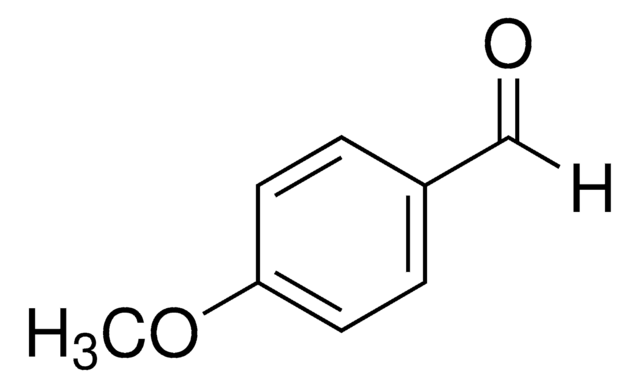A7782
8-Amino-2-naphthalenesulfonic acid
≥97%
Synonym(s):
1-Naphthylamine-7-sulfonic acid, Cleves acid-1,7
Sign Into View Organizational & Contract Pricing
All Photos(3)
About This Item
Linear Formula:
H2NC10H6SO3H
CAS Number:
Molecular Weight:
223.25
Beilstein:
2115629
EC Number:
MDL number:
UNSPSC Code:
12352100
PubChem Substance ID:
NACRES:
NA.22
Recommended Products
Quality Level
Assay
≥97%
form
powder
mp
≥300 °C (lit.)
SMILES string
Nc1cccc2ccc(cc12)S(O)(=O)=O
InChI
1S/C10H9NO3S/c11-10-3-1-2-7-4-5-8(6-9(7)10)15(12,13)14/h1-6H,11H2,(H,12,13,14)
InChI key
QEZZCWMQXHXAFG-UHFFFAOYSA-N
Looking for similar products? Visit Product Comparison Guide
Related Categories
Application
8-Amino-2-naphthalenesulfonic acid can be used as a reactant to synthesize:
- Fe3O4/sulfonated polyaniline composite material via chemical oxidative polymerization with aniline in the presence of magnetite (Fe3O4) nanoparticles.
- Prismatic crystals of strychnine-8-ammonio-2-naphthalenesulfonate-water by heating with strychnine in water/ethanol solvent mixture.
- 5-amino-9-dialkylamino benzo[a]phenoxazine dyes (Nile blue analogs) by condensation with N-alkyl or N-sulfo-propyl 4-arylazo-substituted 3-hydroxyaniline.
Signal Word
Warning
Hazard Statements
Precautionary Statements
Hazard Classifications
Skin Irrit. 2
Storage Class Code
8A - Combustible corrosive hazardous materials
WGK
WGK 2
Flash Point(F)
Not applicable
Flash Point(C)
Not applicable
Personal Protective Equipment
dust mask type N95 (US), Eyeshields, Gloves
Choose from one of the most recent versions:
Already Own This Product?
Find documentation for the products that you have recently purchased in the Document Library.
Customers Also Viewed
Strychnine-8-ammonio-2-naphthalenesulfonate-water (1/1/3.5): The first structure of a strychnine or brucine compound with a zwitterionic species
Smith G, et al.
Journal of Chemical Crystallography, 36(12), 805-811 (2006)
A S Rodrigues et al.
Chemosphere, 205, 433-442 (2018-05-01)
The electrodegradation of the 4-aminonaphthalene-1-sulfonic acid (4AN1S), 5-aminonaphthalene-2-sulfonic acid (5AN2S) and 8-aminonaphthalene-2-sulfonic acid (8AN2S) was studied, using two electrode materials as anode, BDD and Ti/Pt/PbO2, and two different electrolytes, sodium sulfate and sodium chloride. The highest COD removal rates were
Our team of scientists has experience in all areas of research including Life Science, Material Science, Chemical Synthesis, Chromatography, Analytical and many others.
Contact Technical Service

